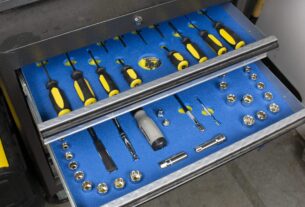When it comes to completing a project, whether it’s DIY or professional, having the right tools is crucial. One of the most important types of tools are hit tools – those that use impact force to get the job done. From hammers to mallets and beyond, these tools come in many shapes and sizes.
But how do you know which hit tools are best for your specific needs? In this guide, we’ll break down everything you need to know about hit tools, including their different types and uses, as well as some tips on how to choose the right ones for your projects.
Types of Hit Tools
1. Hammers
Hammers are one of the most common types of hit tools. They come in various sizes and shapes, with different weights and handles. Some common types include:
– Claw Hammer: This is a versatile hammer that’s great for general use. It has a flat surface on one end for hitting nails and a claw on the other end for pulling them out.
– Sledgehammer: A sledgehammer is much heavier than a claw hammer and typically used for demolition work.
– Ball-peen Hammer: This hammer has a rounded end opposite the striking face, making it useful for shaping metal.
2. Mallets
Mallets are another type of hit tool but differ from hammers in that they have a larger head made from softer materials like rubber or wood. They’re often used when hammering something delicate or fragile that could be damaged by a regular hammer blow. Some popular types include:
– Rubber Mallet: As its name suggests, this mallet has a rubber head that won’t damage surfaces when struck.
– Dead Blow Mallet: This mallet contains sand or shot within its head, which helps absorb shock and prevent rebound.
– Wooden Mallet: A wooden mallet is great for woodworking projects and won’t damage the wood like a metal hammer might.
3. Impact Wrenches
Impact wrenches are powered tools that use impact force to loosen or tighten nuts and bolts. They’re often used in automotive repair and construction work, as they can generate much higher torque than regular wrenches. Some common types include:
– Cordless Impact Wrench: This tool runs on battery power and is portable, making it useful for outdoor jobs.
– Air-powered Impact Wrench: This type of impact wrench is powered by compressed air and is often found in automotive shops.
– Electric Impact Wrench: An electric impact wrench is powered by electricity and is useful for indoor jobs where access to an air compressor isn’t available.
Choosing the Right Hit Tools
Now that you know about the different types of hit tools, how do you choose the right ones for your project? Here are some tips:
1. Consider the Job at Hand
The type of hit tool you need will depend on the job you’re doing. If you’re working on a delicate surface, a rubber mallet may be best, while if you’re demolishing something, a sledgehammer may be necessary.
2. Look at Size and Weight
Hit tools come in various sizes and weights, so it’s important to consider which one will be most comfortable for you to use. A heavier tool may generate more force but could tire you out quickly.
3. Check Handle Materials
Handles can be made from various materials, including wood, fiberglass, or metal. Consider which material will provide the best grip and comfort for your hands.
4. Think About Portability
If you’ll be using your hit tools outdoors or in remote locations, portability may be a factor to consider. Cordless impact wrenches or lightweight hammers may be good choices.
5. Quality Matters
Investing in high-quality hit tools can save you money and time in the long run. Cheap tools may break or wear out quickly, causing delays and frustration.
Conclusion
Hit tools are essential for many different types of projects, from woodworking to automotive repair. Understanding the different types of hit tools available and how to choose the right ones for your specific needs can help ensure a successful outcome. Remember to consider the job at hand, size and weight, handle materials, portability, and quality when selecting your hit tools.
References:
– https://en.wikipedia.org/wiki/Hammer
– https://www.popularmechanics.com/home/tools/g2318/types-of-hammers/
– https://www.homedepot.com/c/ab/types-of-mallets-and-hammers/9ba683603be9fa5395fab90f2d2b955
– https://www.doityourself.com/stry/types-of-mallets-and-their-uses
– https://www.thomasnet.com/articles/tools-suppliers/impact-wrench-applications/
– https://www.thesprucecrafts.com/best-hammers-for-diyers-5087866




